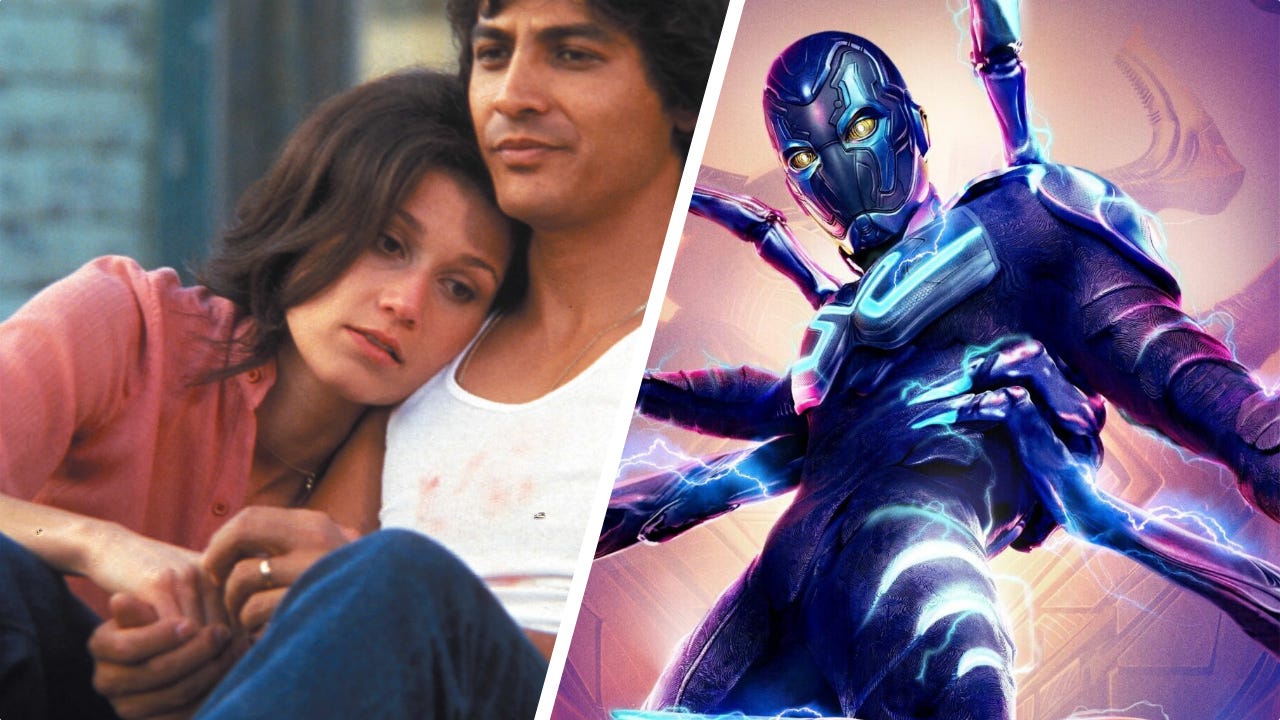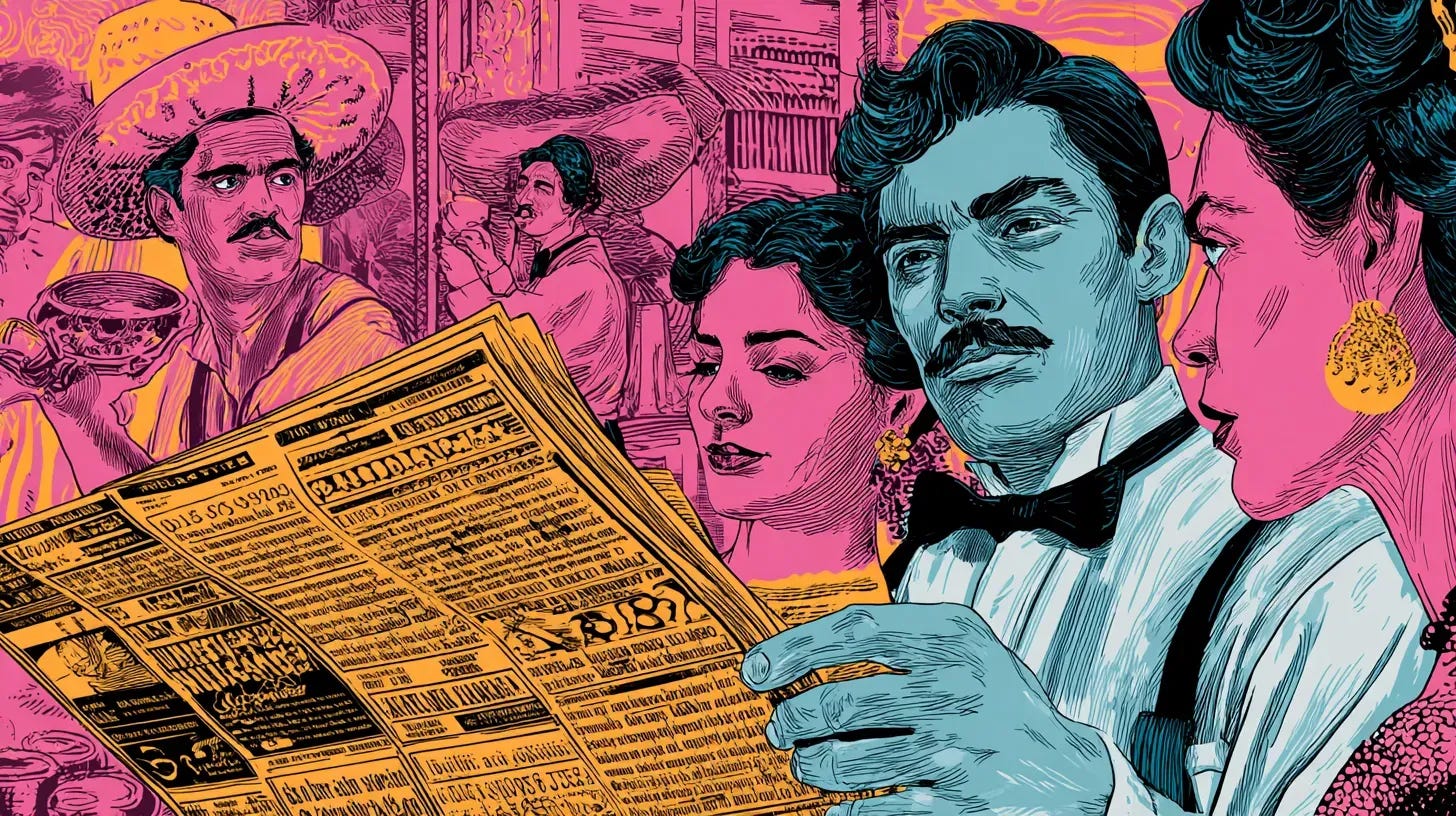Chicano Legends and Superhero Icons: What’s Next for Latino Movies?
Boulevard Nights gave us the reflection of pain and pride under constraint. Blue Beetle gives us imagination unbound.
JOIN TODAY and get 10% off your Daily Chela Insider subscription for an entire year.
When Boulevard Nights premiered in 1979, audiences saw something rare in Hollywood: a film centered on Chicano life in East Los Angeles.
Directed by Michael Pressman, the film told the story of two brothers: one trying to stay out of trouble, the other drawn into the allure of gang life. It was gritty, emotional, and unapologetically brown.
But it was also controversial. Some Chicano activists argued that it reinforced stereotypes, while others defended it as a reflection of real struggles in their communities.
No matter where one stood, Boulevard Nights mattered. It gave voice to a community that had long been erased or caricatured in film. For the first time, audiences saw themselves—not as side characters or criminals, but as complex people navigating love, family, and loyalty within the confines of systemic inequality.
More than forty years later, Blue Beetle (2023) entered theaters with a very different tone—and a new kind of power. Directed by Ángel Manuel Soto and starring Xolo Maridueña, the film became DC’s first Latino-led superhero movie.
Unlike Boulevard Nights, Blue Beetle wasn’t about survival; it was about joy. It captured the humor, warmth, and pride of a Mexican-American family without apology or translation.
In its Spanglish dialogue, cumbia soundtrack, and portrayal of multigenerational love, Blue Beetle felt less like Hollywood representation and more like home. The journey from Boulevard Nights to Blue Beetle isn’t just a story about two films; it’s the story of Chicano representation evolving alongside Chicano identity itself.
Chicano Visibility In Film
In the 1970s and 1980s, Chicano visibility in film often came through the lens of social realism. Movies like Zoot Suit (1981), American Me (1992), and Mi Vida Loca (1994) explored the intersections of poverty, racism, and survival. They carried the weight of authenticity but were often framed by outsiders or filtered through Hollywood’s gaze.
Sociologist Erving Goffman might describe this as a “front stage” performance: a version of identity tailored for mainstream consumption, shaped by the assumptions of those in power.
That isn’t to say these films lacked meaning; they were essential. They showed that Chicanos existed, that their lives were cinematic.
La Bamba (1987), the story of Ritchie Valens, gave the community a hero, a symbol of artistic achievement amid cultural struggle. Selena (1997) did something similar for Tejanos. Each generation of film chipped away at invisibility, making space for the next.
By contrast, Blue Beetle flips that equation. Its creative team—led by Soto and Mexican screenwriter Gareth Dunnet-Alcocer infused the story with cultural specificity and affection.
The film doesn’t explain Chicano life to outsiders; it celebrates it from within. Jaime Reyes isn’t defined by trauma or violence. His power comes from his community and his family, his familia. His grandmother is a revolutionary; his parents are the moral heart of the film. Together, they embody resilience without stereotype.
The Evolution Of Chicano Cinema
The significance of that shift is both cultural and sociological. Stuart Hall, the British-Jamaican cultural theorist and sociologist, wrote that representation is not just about being seen but about who controls the means of seeing.
For decades, Hollywood dictated how Latinos and Chicanos appeared on screen. But films like Blue Beetle represent a reclamation of that control, a move from being the object of the gaze to being the authors of the narrative.
This evolution also reflects the transformation of Chicano identity itself. In Boulevard Nights, manhood was tied to survival, being tough enough to protect family or survive systemic violence. By contrast, Blue Beetle redefines masculinity through empathy and care.
Jaime’s strength lies in protecting his loved ones, not asserting dominance. He cries, he hugs, he listens. That emotional vulnerability would have been unthinkable for a Chicano male lead in the 1970s, but it signals how far cultural narratives have come.
Music plays an equally symbolic role in this continuum. Boulevard Nights used lowrider oldies and barrio soul to underscore its realism, while Blue Beetle features cumbias, reggaetón, and modern Latino pop. The soundtracks mirror generational shifts from analog to digital, from nostalgia to global influence—yet both carry the same rhythm of cultural pride.
Of course, representation remains an ongoing struggle. For every Blue Beetle, there are dozens of Latino stories still trapped in development, waiting for backing or visibility. Hollywood still too often treats Latino-led projects as risks rather than necessities. But the success of Blue Beetle proved that audiences are hungry for authentic stories told with humor and humanity.
Its box office performance and fan response showed that cultural specificity is not exclusionary—it’s universal.
Chicano Cinema As A Movement
When we trace the line from Boulevard Nights to Blue Beetle, we’re not just charting cinematic history. We’re seeing the evolution of a people’s image—from being spoken for to speaking for themselves. One film showed Chicanos surviving; the other shows them thriving. One reflected a struggle for existence; the other reflects confidence in that existence.
Chicano cinema is not a genre but a movement—a response to invisibility. That movement continues today, reshaped but unbroken. Each new film, each story told through a Chicano or Latino lens, adds another verse to a long song of self-definition.
Boulevard Nights gave us the reflection of pain and pride under constraint. Blue Beetle gives us imagination unbound. Together, they prove that Chicano stories don’t need permission—they just need the opportunity to be told.
From the boulevards of East L.A. to the skies of Palmera City, the screen has become both mirror and megaphone. The faces have changed, the tones have shifted, but the message endures: Estamos aquí.
We are here—and we’re not waiting to be seen anymore.
Sammy blends sociology with hands-on experience in music research, documentary filmmaking, and journalism. With a talent for in-depth research and a knack for finding compelling narratives, he aims to shed light on stories that resonate and reveal the pulse of societal change. He also brings a unique sociological perspective to all things pop culture.
JOIN TODAY & Get 10% Off A Daily Chela Insider Subscription For A Year!
Subscribers Get Exclusive News, Videos & Stories:
Our mission is to provide a platform for Mexican Americans, and cover news with the depth and context it deserves.
Here’s how you can help:
Make a Small Monthly Contribution: Your financial support will help us cover operational costs, pay our dedicated team, and expand our reach to more readers.
How To Support:
To subscribe, click on the button below. Thank you for your support and for believing in the power of independent media. Together, we can make sure that every voice is heard and every story is told.








Thank you for this. One of the great challenges is in regard to how do we cultivate our young Chicano / Latino audiences. They ARE the moviegoers. They ARE the ones who show up on opening weekend. But how do we engage them in such a way that they are as excited about a Chicano / Latino film as they are excited about the next 'John Wick' movie or the next genre horror film? So that they don't just wait for a film to stream if they even watch it at all? Theatrical distribution is in upheaval right now but figuring out how to reach the younger audience is a big factor in a Chicano / Latino film's success.